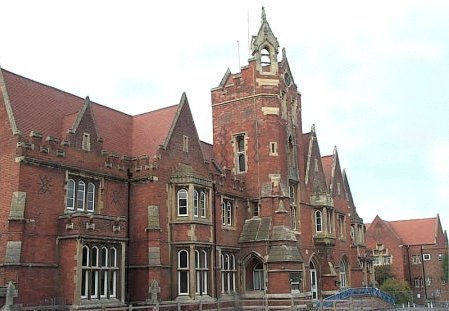The tale of the murder of a seven you old girl, Katie Rough, is truly a tragic one. This young girl was horrifically killed by a mentally disturbed 16 year old girl who had been suffering from mental illness of increasing severity over time. This was a senseless and brutal killing by a girl whose delusions were so strong that they caused the killer to see other humans as ‘robots’. Although it’s right that the killer, who is being detained indefinitely, hopefully in a secure psychiatric hospital, the way that people with mental illnesses are treated in the UK is also partly to blame. This is a murder that is not just the responsibility of the murderer herself, but of a mental health system that is truly not fit for purpose. The terrible murder of Katie Rough has got me thinking about how badly Britain has failed in its mental health provision and how it has followed fads such as Care In The Community, fads which have often failed.
Those who would once have been safely behind the high walls of mental institutions, both for the protection of the wider society and for the protection of the sick person themselves, are now in the community. In theory these individuals are supposedly being treated and cared for by the state medical system and the community members themselves whilst out of hospital. In reality, people with mental illnesses are often abandoned in grotty bedsits in the more cheap and nasty areas of our towns and cities. In many cases in conditions of loneliness that makes the illness worse at best or at worst cause some individuals to become suicidal or even homicidal.
There have been a great deal of bad political decisions taken in Britain over the last forty or so years and one that has had a terribly negative impact on both those who are mentally ill and the general public is ‘care in the community’. Promoted in the 1980’s as a humane replacement for the previous practise of holding sick people in mental hospitals that were increasingly viewed as inhumane and impersonal, the policy of Care In The Community was proposed. The inmates of the asylums were released and there was consequent massive reduction in mental hospital beds as hospitals were closed down. Since then those suffering from mental illnesses are treated and medicated in the community but unlike in a hospital there is often no way of knowing whether the patient is failing to take their prescribed medication, self medicating with illegal drugs or moving in social situations which make their illness worse. Some mentally ill people have either been a danger to or have been exploited by members of the very community that the experts who promoted Care In The Community said would care for them. In my opinion the decision by Government and the Nationa Health Service to treat sick people who should be in a hospital, where they can be both protected, and in some cases guarded against, care in the community has been a disaster in my opinion.
Granted the old mental hospitals were not nice places sometimes. Whilst visiting a patient in Warley Hospital in Essex in the early 1980’s as a young man, I was struck by how the place was a warehouse for the mad. Shrieking or mumbling figures shuffled around the wards aimlessly or slumped in front of the television in the day room. It was a grey, gloomy place full of people with despair on their faces. But what has replaced these warehouses for the living dead is arguably much worse than the old mental hospitals were. People who should be sheltered both for their good and for ours are left, often alone and unsupported, in a cruel world that the sick person cannot cope with.
Care In The Community must have seemed like a brilliant idea when it was first proposed but it has brought a vast amount of tragedy, when the idea and the theory of this method of care met real world situations. Those who avidly promoted the idea that the big mental asylums needed to be closed may not have foreseen the body count that this policy has caused. If you do websearches you will find many stories of sick people whose conditions have worsened under community care and who have either killed others or who in their despair have killed themselves. I sometimes wonder how many of these deaths would not have happened had the old mental hospitals still been open? The old style hospitals allowed for those with less serious mental illnesses to be admitted, be treated and then be released with support if necessary from a hospital setting that protected the patient for a while from the everyday pressures of life. Now we have a situation where people who may be in a dire position with regards their illness having to try to get better whilst at the same time dealing with the stuff that they are probably in no state to do as well. This can’t be good can it? Hospitals at least allow the patient a bit of unpressured getting better time and can be more closely monitored by medical professionals.
The tearing down of the walls of the asylums has in my opinion been an act of monstrous stupidity and cruelty mixed with astonishing short sightedness. There will always be mentally ill people in any society and the removal of the old asylums has made more difficult the task of treating those with severe mental illness. Keeping track of people and their medications in the community has proven to be a monumental task for the NHS and one that like so many other state agencies they fail at, a lot. It was stupid to remove the hospitals that kept both patient and society safe. It is also utter cruelty to try to treat people with catastrophic mental illnesses that neither the patient or the community could cope with, this often doesn’t end well for either the community or the patient or both.
I can’t but help to wonder whether the outcomes in this awful case would have been different had this teenager been hospitaised sooner? Her condition appeared to be worsening as time went on but still she was left in the community to further sink into despair and delusion until ultimately she murdered a little girl. Maybe if the perpetrator had been taken into hospital earlier her mental decline could have been treated or managed, most importantly she would have been prevented from causing harm to others. This is a tragedy that could and should have been avoided.





